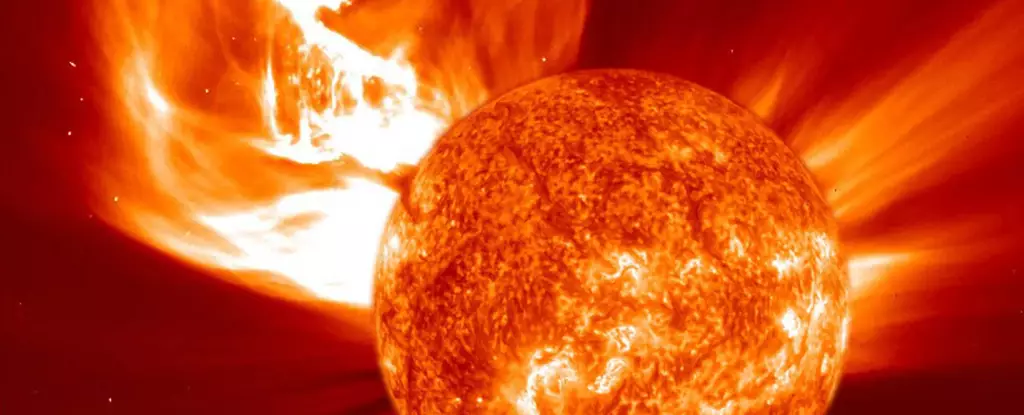Recently, a significant chapter unfolded in the realm of satellite technology when three miniature satellites from Australia’s Curtin University, part of the Binar Space Program, met an unexpected fiery end upon re-entering Earth’s atmosphere. Dubbed Binar-2, 3, and 4, these CubeSats had a life expectancy of six months but instead survived barely a third of that time, surrendering to nature’s elements after just two months. The term “Binar” translates to “fireball” in the Noongar language, a poignant reminder of how these satellites ultimately returned to Earth. This incident stands as a compelling case study in understanding the direct influence of solar activity on satellite longevity and operational effectiveness.
All spacecraft in low Earth orbit (specifically below 2,000 kilometers) face the inevitability of orbital decay, a phenomenon where atmospheric drag pulls them closer to Earth until they ultimately disintegrate. The last few months have seen increased solar activity which directly impacts this decay. While smaller satellites like the CubeSats are incredibly cost-effective, they are also extremely vulnerable to the fluctuations in space weather. During periods of heightened solar activity, a surge of charged particles from the Sun interacts with the Earth’s atmosphere, altering its density and subsequently increasing drag on satellites. As seen with Binar-2, 3, and 4, what was meant to be an extensive testing period became a brief interlude due to unpredictable solar behavior.
The Anomaly of Solar Cycle 25
Experiencing an unusually aggressive phase in solar cycle 25, the heightened activity has resulted in solar flares and enhanced solar wind, creating challenges not strictly confined to satellite operations. The broader implications of this cycle, typically lasting about 11 years, can be seen in the increased frequency of auroras, observable now far beyond their historical ranges. While the cycle is indeed cyclical, predicting the specific events and intensity of solar activity remains a daunting task for space weather forecasters. The current conditions have challenged even seasoned satellite operators, compelling a reevaluation of methods and strategies to safeguard satellite missions.
Effects on Satellite Operations and Long-Distance Communication
The influence of solar activity extends beyond mere satellite durability; it also poses significant risks to astronauts, pilots, and long-distance communication networks. Increased solar wind and flares contribute to an augmented rate of ionizing radiation, increasing hazards for people traversing the upper atmosphere. For satellites like the International Space Station and commercial ventures, including Starlink, the stakes are high. These satellites are equipped with thrusters designed to counteract increased atmospheric drag, yet such maneuvers incur economic costs for operators. On the other hand, CubeSats like Binar-2, 3, and 4 lack these capabilities, leaving them at the mercy of nature’s whims, revealing the inherent vulnerabilities in budget satellite missions.
The insights gained from the early demise of the Binar satellites underline the urgency for improved space weather forecasting technologies. While satellite missions can be launched relatively cheaply, the premature end of a mission carries inherent costs. Such financial implications can be significant for commercial projects, driving the demand for predictive models that accurately assess and anticipate variations in solar activity. As the scientific community strives for advancements in our understanding of space weather, it becomes increasingly evident that strategic planning must consider such unpredictable factors.
While the setbacks faced by Binar-2, 3, and 4 paint a sobering picture, it is crucial to recognize that they also serve as a learning experience for future missions within the Binar Space Program. Ongoing endeavors will adapt to the lessons of solar interactions, ensuring that upcoming satellites are better equipped to survive the harsh realities of space. Anticipating a less tumultuous solar period by 2026 and a return to solar minimum conditions by 2030, there is a glimmer of hope that forthcoming missions will enjoy a more stable environment, enabling longer operational lifetimes.
The extinguishing of the Binar CubeSats highlights a pivotal narrative in the discourse surrounding space exploration and satellite technology. While solar cycles inherently present a challenge for missions, they also catalyze the evolution of satellite technology and operational strategies. As we stand at this juncture, we are reminded of the delicate balance between innovation and the celestial forces that govern our universe. Future satellite missions must embrace these lessons to mitigate risks and face the unpredictable nature of space with increased resiliency and preparedness.


Leave a Reply